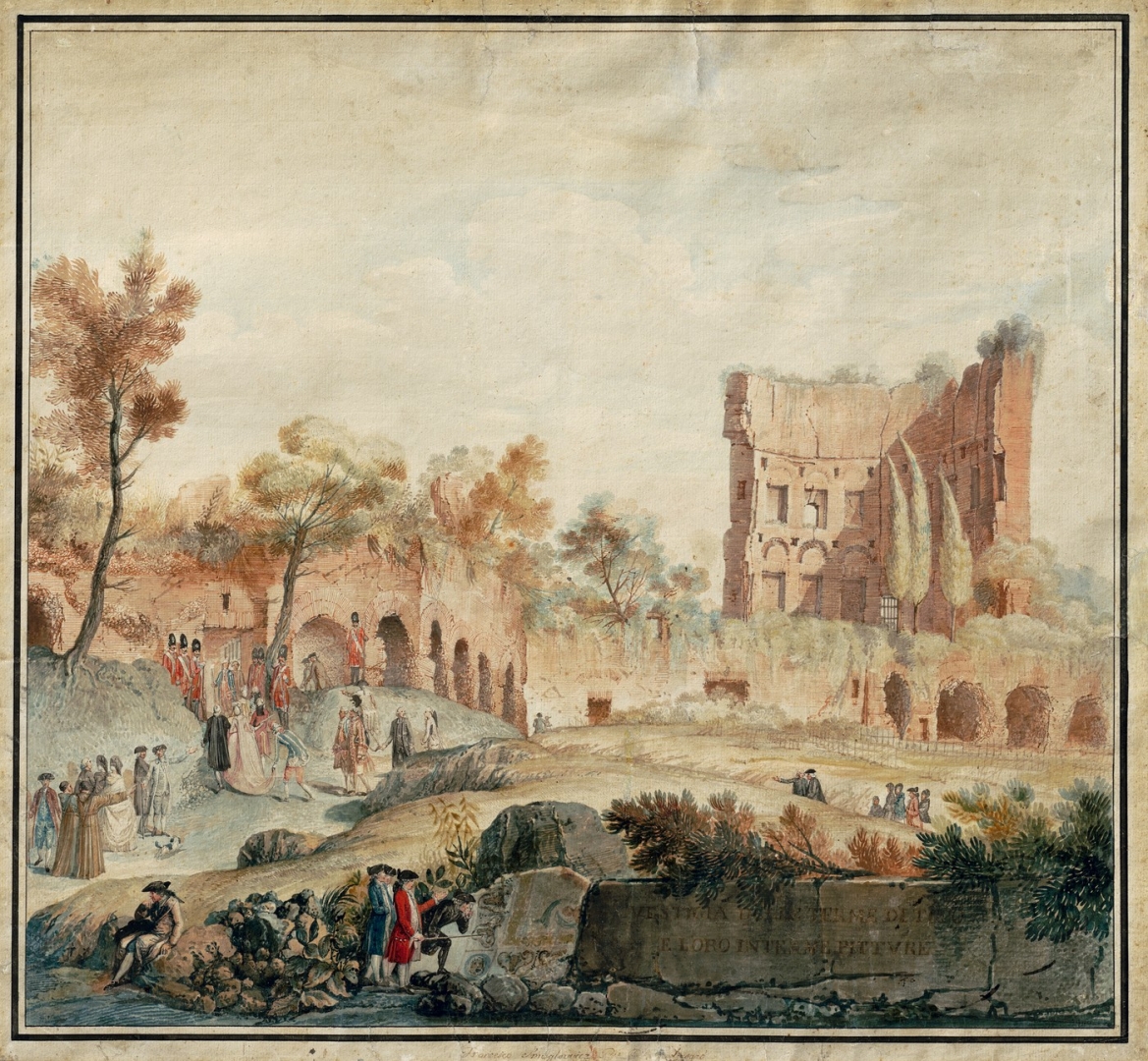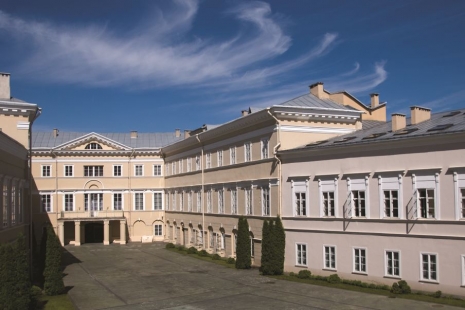Franciszek Smuglewicz has a special place in the history of Lithuanian art. In the late 18th – early 19th century, he was one of the most popular and most acclaimed artists of local origin – pictor doctus, much superior to many of his contemporaries in education and professional training. In 1797, invited to work as the head of the Drawing and Painting Department, which was being founded at Vilnius University, Smuglewicz became its first professor, and the founding father of the national school of art.
Smuglewicz lived in a period of historical shifts, witnessing and actively participating in important events of the political and artistic life. Born into the family of artists, he acquired basic professional training in Warsaw, in the studio of his father Łukasz Smuglewicz and relative Szymon Czechowicz, but it was Rome that was the making of him as an independent creator. During his twenty years in that city, which was a hub of culture and art at that time, he kept company with artists, antique dealers, publishers of various nationalities, and was among the first European artists to embrace the new style of Classicism. Smuglewicz’s name earned fame, and his works – above all, professionally executed copies of classical monuments – contributed to the formation and dissemination of the style of Classicism in all Europe.
While studying in Rome, Smuglewicz received a scholarship of the ruler of Poland and Lithuania, Stanisław August Poniatowski, but upon his return to the homeland, he did not become a court artist. Sturdy and somewhat coarse characters of Smuglewicz’s works were not quite up to the ruler’s aristocratic and refined taste; besides, the court milieu was alien to the artist’s nature – his love for creative freedom and his democratic convictions had the upper hand. The artist’s activity was related to the city – he founded a private painting school in Warsaw, and later led the Drawing and Painting Department of Vilnius University.
Smuglewicz was a representative of Enlightened Classicism, an active and progressive citizen of his country. He kept in contact with the most forward-thinking public figures of that time – Hugo Kołłątaj, Stanisław Kostka Potocki, Karol Prozor, Paweł Ksawery Brzostowski, Jakub Jasiński and other educators, reformers, patriots. Through his work, the artist boldly expressed his views, and sought to shape the mentality and political views of his compatriots, to improve people’s cultural level and aesthetic education. While working as the head of the Drawing and Painting Department of Vilnius University, Smuglewicz not only trained the first generation of local artists, but also significantly contributed to the strengthening of the social status of artists, advancing the understanding of professional art, and created the preconditions for the further development of art genres – Smuglewicz and his students created not only portraits and altarpieces, which were dominant in Lithuanian Baroque art, but also classical, historical and genre compositions and landscapes.
As a creator, Smuglewicz was both praised and criticized, forgotten and rediscovered. Today, Smuglewicz’s significance for Lithuanian, Polish and even European art is not doubted. His works take an honourable place in permanent museum exhibitions, are shown in thematic exhibitions, and his less analyzed work of the Rome period has been receiving more research attention lately. However, a larger exhibition dedicated to Smuglewicz has not been held to date.
The aim of this exhibition is to present Smuglewicz’s many-faceted activity and creative work. The exhibition starts with a room dedicated to the artist’s family, presenting the artistic environment in which Smuglewicz came of age. Further, his copies of monuments of classical antiquity created in the Roman period and independent compositions are shown. The bulk of the exhibition is comprised of Smuglewicz’s works created after the artist’s return to the homeland. They are divided by themes and genres, thus allowing to reveal the wide range of Smuglewicz’s creative interests and his impact on the further development of Lithuanian art. One of the last rooms of the exhibition is devoted to his teaching work and his students.
Brief descriptions given at the majority of works and the supplementary video material will help to bring the distant past nearer and better understand Smuglewicz’s work. The organizers hope that the exhibition will not only offer the viewers memorable aesthetic impressions, but also will involve them in an exciting adventure of discovery.





